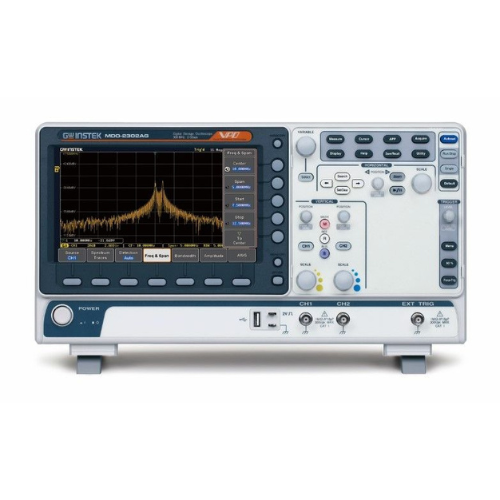

Unlock the Power of New-Generation Oscilloscopes: Analyse Waveform Data Like Never Before!
Ever found yourself drowning in a sea of waveform measurement data, wondering where to begin your analysis? Are you eager to decipher the trends in signal changes or identify deviations hidden within numerous tested signals? If so, you're not alone in facing these challenges, as traditional oscilloscope functions often fall short.
Enter the game-changing solution: the segmented memory function in our new-generation oscilloscopes. This innovative feature empowers you to capture precisely the waveforms you want to observe, filtering out irrelevant signals and optimising memory depth usage. With this technology, high-speed waveform capture is followed by Auto Measure analysis, calculating segmented memory page by page, with sample spacings reaching microseconds at lightning speed.
But that's not all - our range of oscilloscopes takes it a step further. With an integrated robust statistics function within the segmented memory feature. This enhancement allows you to gain deep insights into the distribution of signals captured, helping you discern whether they align with your expectations or if there are unexpected deviations.
Let's delve into some real-world applications:
- IC Pin Signal Analysis: Imagine you're measuring a signal on an IC Pin, and it sends out varying numbers of Pulse groups within fixed time intervals. You expect these Pulse Counts to follow a Gaussian or equal-difference distribution. With our oscilloscope's statistics function, you can effortlessly verify if the actual distribution matches your expectations. This level of precision and analysis is simply unattainable using general measurement or playback functions. See the example below for a visual representation of an equal-difference distribution.
With the statistics function of our segmented memory, you're not just observing data page by page; you're gaining a comprehensive understanding of your signals' behavior, enabling you to make informed decisions and refine your testing processes.


With the statistics function of segmented memory, users gain the power to analyse whether the captured segmented waveforms contain significant deviations without the cumbersome task of checking each page individually. For instance, consider a dataset comprising 1,000 pages of segmented waveforms, where the majority exhibits a width of 100 microseconds.
Our statistics function simplifies the process. It condenses the complexity of this data, allowing users to quickly identify outliers. For example, among the 1,000 waveforms, 801 are concentrated in Bin5, with variations ranging from 99.77 microseconds to 100.2 microseconds. This consolidated insight enables users to ascertain if any pulse deviates significantly from the expected range.
This efficient analysis not only saves time but also ensures precise identification of deviations, providing users with the confidence that their measurements are within the acceptable limits.


Discover precision and efficiency with GW Instek's advanced oscilloscopes! The GDS-2000E, MSO-2000E, MDO-2000E, and MDO-2000A series come standard-equipped with segmented memory and the powerful statistics function.
With these cutting-edge features, users can effortlessly analyse distribution trends and pinpoint deviations that exceed expectations within large datasets. Say goodbye to the hassle of sifting through numerous waveforms manually; our oscilloscopes streamline the process, providing accurate insights in record time.
If you find yourself grappling with the challenge of analysing extensive measurement waveforms, look no further. Choose an oscilloscope from the GDS-2000E, MSO-2000E, MDO-2000E, or MDO-2000A series, and experience the difference segmentation and statistics functions can make.
Ready to elevate your waveform analysis game? For further details on our GDS-2000E/MSO-2000E/MDO-2000E and MDO-2000A series, don't hesitate to contact us. Empower your analysis and ensure precision in every measurement.




